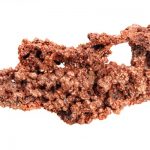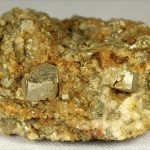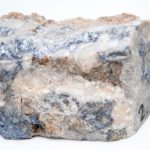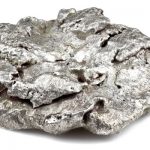| Location | Ontario, Canada |
| Commodities Primary | Gold |
| Commodities Secondary | Copper, Silver, Molybdenum |
| Total Current Year Production | Period Ended December 31, 2021 |
| Gold; ounces | 405,192 |
| Total Known Current and Historical Production | 1910 – 2021 |
| Gold, ounces | 42,274,000 |
| Copper; pounds | 16,951,000 |
| Silver; ounces | 11,989,000 |
| Molybdenum; lbs | 5,000 |
| Total Known Compliant Reserves | Proven & Probable |
| Gold, ounces | 6,645,000 |
| Copper; pounds | 44,048,000 |
| Silver; ounces | 0 |
| Molybdenum; lbs | 0 |
| Total Known Compliant Exclusive Resources | Measured & Indicated |
| Gold, ounces | 4,202,000 |
| Copper; pounds | 55,985,000 |
| Silver; ounces | 966,000 |
| Molybdenum; lbs | 5,124,000 |
| Inferred | |
| Gold, ounces | 13,141,000 |
| Copper; pounds | 38,104,000 |
| Silver; ounces | 0 |
| Molybdenum; lbs | 0 |
| Total Known Endowment | 1909-2021 |
| Gold, ounces | 66,262,000 |
| Copper; pounds | 155,088,000 |
| Silver; ounces | 12,955,000 |
| Molybdenum; lbs | 5,129,000 |
Total Known Endowment includes current and historical production and compliant reserves and resources
Data compiled from DigiGeoData database,Ontario Mineral Deposit Inventory, technical reports and corporate websites
DigiGeoData has compiled this information using best practices and does not warranty the completeness or accuracy.
All data should be checked and verified before use
The long and exciting mineral exploration and mining history of the Kirkland Lake Mining Camp stretches for well over one hundred years.
The first gold rush was recorded with claims staked in 1906 after a boulder containing gold was discovered. The Kerr-Addison and Reddick claims were staked and in 1908 a 20-stamp mill was erected on the property. The small amount of gold recovered, valued at only $314, was used in the first gold coins to be minted in Canada. This property became the Kerr-Addison mine which produced close to 11 million ounces of gold from 1938 until final closure in 1996.
The first gold production was in 1910 from the Golden Gate Mine also known as the Vigrass or Crescent Mine. It produced just over 31,000 ounces of gold intermittently until it finally closed in 1947.
The next rush occurred a few years later in 1911 when William Wright and Ed Hargreaves stumbled across a gold bearing quartz outcrop and staked their claims. These claims would become part of the Wright Hargreaves mine which produced over 4.8 million ounces of gold from 1921 to closure in 1965.
Numerous claims were staked during 1911 that later became parts of mine properties including the Tech-Hughes (1917-1968), Kirkland Lake Gold (1916-1960), Lake Shore (1918-1998), Tough-Oakes (Toburn) (1913-1953), Macassa (1933- present) and Sylvanite (1927-1961).
In 1913, high grade ore was shipped from the Tough-Oakes #2 vein. By 1914 it was the only producing gold mine in the Kirkland Lake mining camp. The mine closed in 1918. Operations were re-started in 1932 and the mine was renamed Toburn. Production was close to 580,000 ounces until it closed in 1953 ranking it as the 10h top gold producing mine in the Kirkland mining camp.
In 1919, the Township of Teck was formed to establish critical and public services such as utilities, water and roads for this now population.
Kirkland Lake area became a major gold producer during the 1920’s and 1930’s.
In 1938 both the Upper Canada and Kerr Addison mines started production adding to the already significant gold being produced.
On the western side of the Kirkland Lake camp, near Matchewan are the Young-Davidson and Matachewan Consolidated mines. Gold was first discovered here in 1916 by Jack Davidson who then partnered with Weldy Young to start the Young-Davidson Mines. The mines together produced approximately 970,000 ounces of gold between 1934 and 1956. Just over 7000 ounces were produced between 1981 and 1982. Production began again at the Young-Davidson in 2012 and continues to the present.
During the 1950’s and 1960’s, many of the larger producing mines closed. By 1972 only the Macassa mine remained in production until it temporarily closed in 1999. Production was re-started in 2002.
In 2005, the South Mining Complex was discovered. This new gold find was based on a north-south orientated structure instead of the main east-west structure or break. By 2007 the price of gold was increasing to over $700 per ounce which started a new of exploration and re-thinking of existing mines and deposits.
There has been a consolidation of mining companies and properties over the years. Currently Kirkland Lake Gold and Agnico Eagle Mines control several of the past and producing mines and deposits. Alamos Gold owns the Young-Davidson producing mine.
In 2018, there are two producing mines; the Macassa and Young-Davidson. They have an expected mine life until 2032 and 2031 respectively.
By the end of 2017, the Kirkland Lake mining Camp had produced approximately 40,702,000 ounces of gold from 35 mines. Approximately 38,400,000 ounces or almost 95% of the total production came from 10 mines.
Other minor metal production included 16,951,000 pounds of copper and 10,837,000 ounces of silver and a small amount of molybdenum from the Upper Beaver and Ryan Lake mines.
Kirkland Lake Mining Camp Economic Mineral Deposit Settings
The Kirkland Lake Mining Camp encompasses the eastern extents of the Abitibi greenstone belt in Ontario, which is overlain and intruded by Southern Province sedimentary and mafic intrusive rock, that are in turn overlain by Paleozoic carbonate-clastic sedimentary rocks and Quaternary glacial deposits. One main geologic feature has been successfully targeted for economic mineral deposits in the Kirkland Lake Mining Camp over the past 100 years; the Larder Lake–Cadillac Fault
Gold mineralization associated with the Larder Lake-Cadillac Deformation Zone
Both the highly productive Kirkland Lake gold camp and the Matachewan gold camp lie along a major deformation zone, the Larder Lake–Cadillac Deformation Zone (LLCDZ). The LLCDZ is a long-lived deformation zone that provided the depositional control on Timiskaming supracrustal rocks and juxtaposed them with older Tisdale assemblage rocks of the Abitibi greenstone belt to the south. To the north, the Timiskaming rocks lie in unconformable depositional contact with older Abitibi greenstone belt volcanic and intrusive rocks of the Blake River and Lower Tisdale assemblages. The protracted and complex kinematic history of this crustal scale break is interpreted to have played a critical role in both the emplacement of, as well as the preservation of the rich gold deposits that occur along it (W. Bleeker, personal communications, 2015).
Approximately 41 million ounces of gold have been produced from the deposits associated with the LLCDZ since mining began in the area in 1913 (DigiGeoData Inc., 2018.). Gold associated with the LLCDZ occurs in a variety of structural and lithologic settings. The most noted deposits are loosely grouped as follows.
Kirkland Lake Main Break
In Kirkland Lake, 7 mines—the Macassa (the only current producer), Kirkland Lake, Teck–Hughes, Lake Shore, Wright–Hargreaves, Toburn and Sylvanite mines—have produced over 25.6 million ounces of gold since 1913 (DigiGeoData Inc., 2018.) from a single ore body. These mines are all associated with the Kirkland Lake “Main Break”; a ductile thrust characterized by a wide mylonite zone and locally brecciated wall rock, chlorite schist and gouge. Gold in the Main Break is hosted in quartz veins deformed within the fault. Much of the movement on this fault is interpreted to have developed after gold was deposited. It has been interpreted to be a splay associated with late movement on the LLCDZ (Ispolatov et al. 2005). The Main Break and its associated gold mineralization had an affect on the Timiskaming assemblage conglomerate, mafic tuff (the Goodfish tuff) and the Kirkland Lake Intrusive Suite.
Larder Lake – Cadillac Fault Hosted Mineralization
The past-producing Kerr–Addison, Chesterville, McBean, Cheminis and Armistice mines as well as the Omega, Fernland and Barber Larder gold deposits are located in the LLCDZ proper (Smith et al. 1993). Replacement style, pyrite-associated ‘flow ore’ (massive to pillowed iron-tholeitic rocks) and gold-rich quartz-carbonate veins in ‘green carbonate ore’ (komatiitic flow rocks) were the dominant ore types mined. ‘Albitite ore’ (pyritized dikes, sill and plugs), ‘graphitic ore’ (pyritized graphitic interflow sedimentary rocks) and mineralized clasts within post mineral gouge zones were lesser gold sources in these mines (Smith et al. 1993 and Ispolatov et al. 2005). The above mines have produced over 11 million ounces of gold (DigiGeoData Inc., 2018). The highly productive Kerr–Addison mine with its variety of ore types had the bulk of the production with almost 10.5 million ounces of gold from 1938 until 1996.
Matachewan Camp
To the west, the Matachewan gold camp straddles the LLCDZ and hosts the currently producing Young–Davidson and past-producing Matachewan Consolidated mines (the present Young–Davidson mine occupies both past producing Matachewan Consolidated and Young–Davidson properties). The gold deposits are hosted in a Timiskaming-age syenite and are associated with quartz stockwork and disseminated pyrite (Rocque et al. 2008, Linnen et al. 2013). The combined mines have produced 1.8 million of ounces from 1934 to 2017 (DigiGeoData Inc., 2018).
Adapted From:
Guindon, D.L., Farrow, D.G., Hall, L.A.F., Daniels, C.M., Debicki, R.L., Wilson, A.C., Bardeggia, L.A. and Sabiri, N. 2016. Report of Activities 2015, Resident Geologist Program, Kirkland Lake Regional Resident Geologist Report: Kirkland Lake and Sudbury Districts; Ontario Geological Survey, Open File Report 6318, 106p.




Copyright © 2021 DigiGeoData | Powered by ViaMarket
Data compiled from DigiGeoData database.
DigiGeoData has compiled this information using best practices and does not warranty the completeness or accuracy.
All data should be checked and verified before use